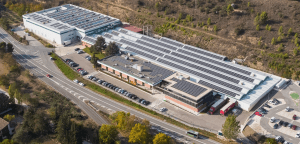The expression “time flies” evolved from the writings of an ancient Roman poet, but it rings truer than ever in the context of today’s 24/7 connected world. Put the phrase in the context of your data center, and you’ll realize the September 30, 2018 Data Center Optimization Initiative (DCOI) deadline, in which data center infrastructure management (DCIM) plays a huge role, will be here soon.
In fact, as of this writing, you have just about 120 weeks and 870 days to comply. Our previous post provided an overview of where to start.
By now, you probably know that implementing DCIM is not only a condition of the mandate, it’s also the means for meeting other DCOI requirements. Here’s how.
DCIM FAQ
For a better understanding of the role and value of DCIM, we put together the following FAQ. We’ve also created an interactive infographic to bring DCIM to life and illustrate its control over each piece of the data center.
Q: Overall, what does DCIM do?
A: Data Center Infrastructure Management (DCIM) simplifies, automates and manages critical
infrastructure in and around the data center. It provides a true understanding of power usage effectiveness (PUE). In turn, it enables improved efficiencies, reduced capital and operational expenses and helps ensure business availability. Remember, DCOI says existing data centers that cannot operate at 1.5 or below must be closed by FY18.
Q: How do I obtain the data needed to understand power usage?
A: This question can only be answered by another question. What has been instrumented in your data center? Gaps can occur when you don’t have proper metering. Everything from the consumption of generators, power inputs of the mechanical chillers, to the switchgear and incoming power and lighting must be considered. In the white space, racks must be equipped with intelligent power strips. In addition, the power and server utilization at the individual asset should be captured if at all possible.
Q. Why is it important to gather all this data?
A: Reporting is a requirement of DCOI. You must have evidence of a reduction in energy consumption. DCIM enables you to track progress by accounting for every part of the data center. It also shows where you were last year, how your floor footprint has changed and how much consolidation was accomplished.
- Why else should I be concerned with asset level information and inventory?
- The granular asset power information and inventory will identify the individual asset power consumption. This information provides the knowledge needed in order to identify candidates for retirement, consolidation or replacement. With automated asset information gathering, business costs and impacts are immediately identified and accurate charge back is enabled.
Q: How does DCIM provide this visibility?
A: DCIM identifies all the elements in the power chain to provide an immediate profile of your energy costs, PUE as well as calculate the longer-term impact. From there, you’ll discover opportunity for improvement.
Q: How can DCIM support consolidation and help me plan for the future?
A: Through simulating real scenarios of change, DCIM provides the opportunity to project the effects of these changes, , for example, when consolidating from 200 cabinets to 100, or closing down rooms and moving the assets.
Q: Can I leverage DCIM tools that are already in place and still use Schneider Electric’s StruxureWare for Data Centers solution?
A: Yes — Schneider Electric’s offering is vendor neutral. Therefore, you can easily take advantage of the asset and power information you have gathered. Our solution can import and integrate a number of different tools to establish a baseline. Add to this Power Monitoring Expert software and you will have a single solution to capture and instrument data — one view with full visibility.
Have more questions on DCIM or meeting DCOI compliance? Please feel free to ask in the comment section below.
Click through this infographic to explore DCIM in action.




Conversation
Every organization needs a well-built data center for its smooth functioning and success. A data center stores, manages, processes, and distributes large quantities of data and information that are important for the organizations. The data centers play a vital role in the day to day functioning of the organizations.
In which territories and to which organizations does the DCOI compliance apply? Are there any other innitiatives in other World regions to limit the PUE of certain data centers? Thank you.
great post